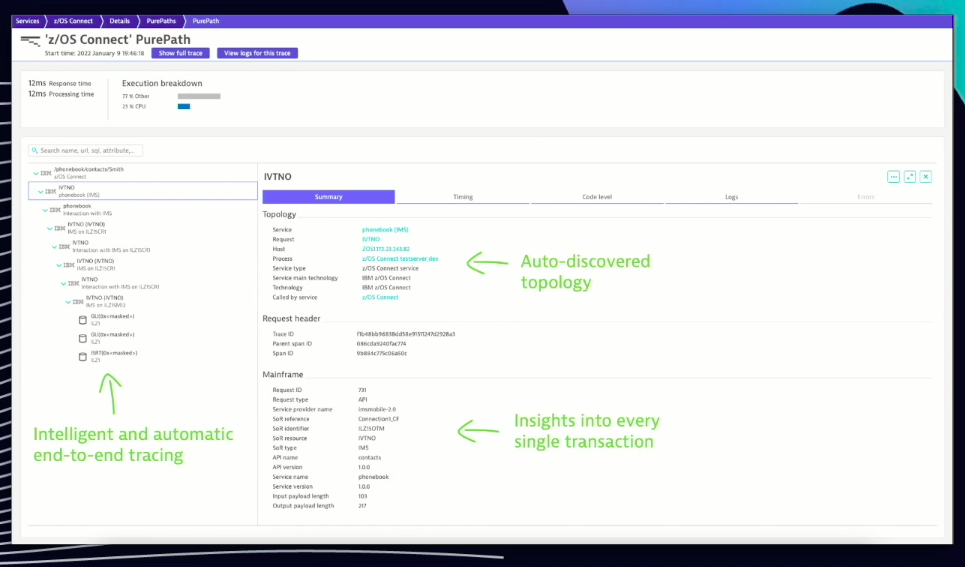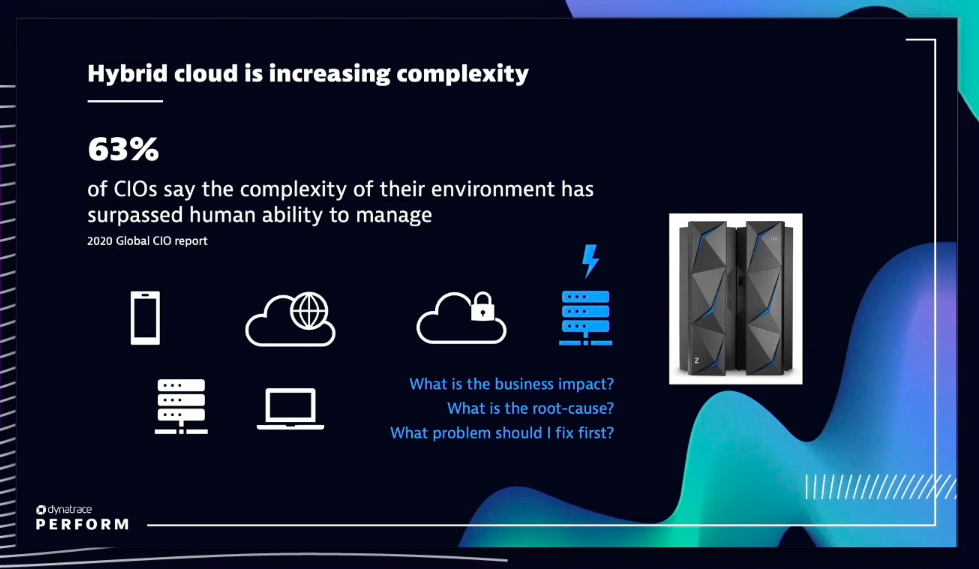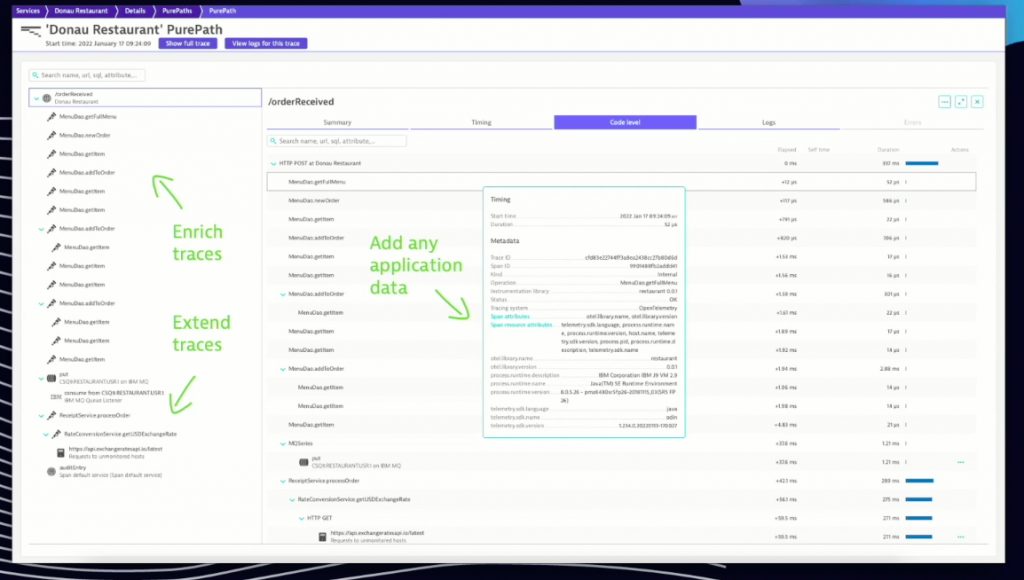While many companies now enlist public cloud services such as Amazon Web Services, Google Public Cloud, or Microsoft Azure to achieve their business goals, a majority also use hybrid cloud infrastructure to accommodate traditional applications that can’t be easily migrated to public clouds.
That’s why hybrid cloud architecture is a key tool in the arsenal for organizations striving to grow, modernize, and innovate. Hybrid cloud infrastructure enables them to use public cloud resources for scale and agility while also managing on-premises resources.
Indeed, more than 90% of businesses have implemented a hybrid cloud strategy.
“When we are talking about hybrid cloud, typically companies combine public cloud, private cloud, and on-premises infrastructure such as IBM Z platform to create a flexible, distributed computing environment,” explains Alexander Huetter, a Dynatrace product manager. In a presentation at the Perform 2022 conference, Huetter uses the IBM Z platform to expand on the benefits of using an observability platform to manage hybrid cloud infrastructure.
How to modernize for hybrid cloud
Hybrid cloud infrastructure can present integration and modernization challenges for traditional applications especially when companies are using middleware technologies like Enterprise Service Bus to integrate services with infrastructure. “Based on that technology stack, it is difficult to modernize traditional applications, especially applications running on IBM Z platforms,” he says.
Traditional, on-premises infrastructure can also make it difficult to do the following kinds of tasks—all of which are essential pieces of a modern cloud-driven environment:
- interact with cloud-native functions
- build microservices-based architecture
- achieve application programming interface (API)-driven development
To modernize hybrid cloud, IBM has introduced a new offering — IBM z/OS Connect Enterprise Edition — that allows companies to expose z/OS assets to cloud-native functions, but also allows z/OS assets to access cloud-native functions. “This capability allows you to completely change the way you implement applications in the future,” Huetter says.
Dynatrace helps navigate the increasing complexity of a multicloud environment by providing end-to-end observability from cloud-native environments to the IBM Z platform. The following screenshot illustrates a scenario of an IT setup of z/OS Connect Enterprise Edition connecting to IMS programs.

Everything is automatically captured by the Dynatrace observability platform — no configuration is needed. In addition to transaction-level tracing, Dynatrace provides a wealth of different performance and health metrics so that companies can gain visibility into their entire technology stack.
“Dynatrace provides the possibility to go one abstraction level higher,” Huetter explains.

For an IBM Z platform with a private cloud, public cloud, mobile front end, and several workstations involved with middleware technologies, responding to an issue quickly is critical. When a problem occurs in a complex environment, Huetter notes that teams need to do the following three things immediately to mount an effective and timely response:
- Identify the root cause of the problem
- Assess the business impact
- Decide what issue should be fixed first when multiple issues are at play
How to achieve seamless observability for hybrid cloud infrastructure
Dynatrace provides AI-powered answers with deep transactional insight for a variety of technologies. “When you deploy Dynatrace on all your different technologies, the platform can really help you understand problems on an aggregated level,” Huetter says.

On the left side is the quantified business impact of a CICS service outage. Below that depicts which applications are causing failures and how many users have been affected, so DevOps teams can identify which problems to fix first. “Dynatrace can help prioritize problems based on their impact on the business.”
Roadmap
Dynatrace is constantly improving transactional insights for the IBM Z ecosystem. This includes IMS Fast Path transaction tracing and CICS terminal transaction tracing.
The roadmap includes the following:
- Java Database Connectivity (JDBC) interface tracing
- Java Message Service (JMS) interface tracing
- Additional infrastructure metrics
“When it comes to hybrid cloud, one key concept is to deploy workloads where it needs to with proper computation power,” Huetter explains. If a workload requires high computation power, the obvious next step is to deploy that workload on IBM Z or LinuxONE platforms. Dynatrace already provides observability for OpenShift and is working to bring OpenShift to IBM Z and LinuxONE platforms.
Open observability
Open observability with Dynatrace enables companies to gain additional insight into an application’s performance and behavior using OpenTelemetry.
“We are currently in a big project to improve open observability with Dynatrace,” Huetter says. “This is important because it enables customization of performance analysis for various use cases and environments. For example, companies can now add vendor-neutral OpenTelemetry instrumentation to their applications in order to capture additional business functions or add specific diagnostic points.

In this example, the OpenTelemetry symbol on the left side shows how companies can enrich or extend traces depending on business needs and add data or attributes. “We added a lot of different user and resource attributes to better describe the behavior of that application,” Huetter says.





Looking for answers?
Start a new discussion or ask for help in our Q&A forum.
Go to forum